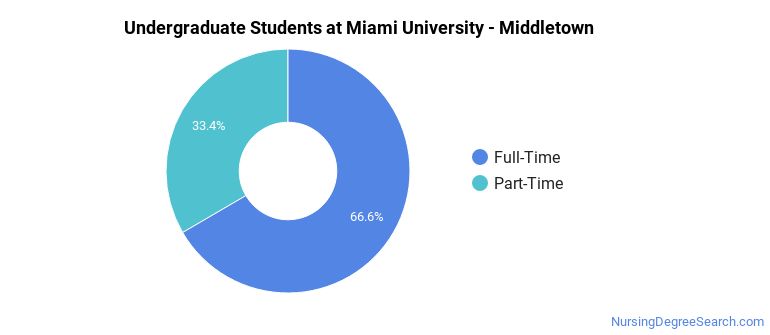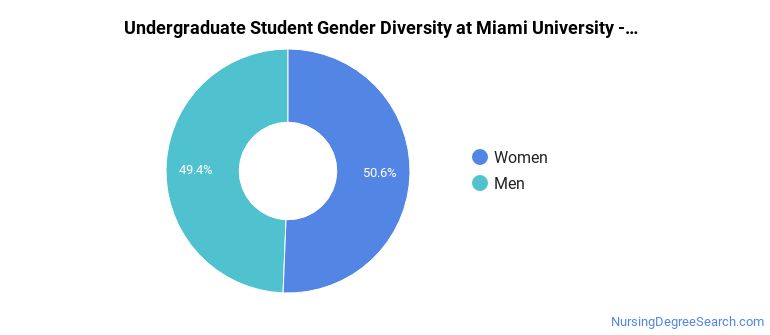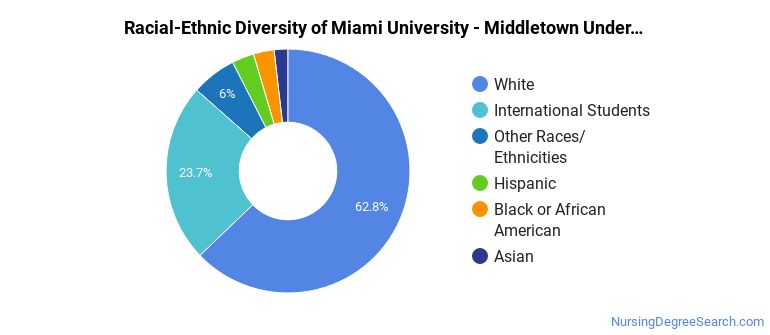Miami University - Middletown Nursing Programs
Miami University - Middletown is a public institution situated in Middletown, Ohio. Middletown is a good match for students who enjoy the safety and convenience of the suburbs.
Where Is Miami University - Middletown?

Contact details for Miami University - Middletown are given below.
| Contact Details | |
|---|---|
| Address: | 4200 E University Blvd, Middletown, OH 45042 |
| Phone: | 513-727-3200 |
| Website: | miamioh.edu |
| Facebook: | http://www.facebook.com/MiamiUniversity |
| Twitter: | http://twitter.com/miamiuniversity |
How Do I Get Into Miami University - Middletown?
You can apply to Miami University - Middletown online at: miamioh.edu/regionals/admission/
Can I Afford Miami University - Middletown?
Student Loan Debt
While almost two-thirds of students nationwide take out loans to pay for college, the percentage may be quite different for the school you plan on attending. At Miami University - Middletown, approximately 46% of students took out student loans averaging $5,396 a year. That adds up to $21,584 over four years for those students.
Miami University - Middletown Undergraduate Student Diversity

Gender Diversity
Of the 1,092 full-time undergraduates at Miami University - Middletown, 49% are male and 51% are female.

Racial-Ethnic Diversity
The racial-ethnic breakdown of Miami University - Middletown students is as follows.

| Race/Ethnicity | Number of Grads |
|---|---|
| Asian | 20 |
| Black or African American | 30 |
| Hispanic or Latino | 32 |
| White | 686 |
| International Students | 259 |
| Other Races/Ethnicities | 65 |
Geographic Diversity
Ohio students aren't the only ones who study at Miami University - Middletown. At this time, 2 states are represented by the student population at the school.
Miami University - Middletown Nursing Concentrations
The table below shows the number of awards for each concentration.
| Major | Bachelor’s | TOTAL |
|---|---|---|
| Registered Nursing | 20 | 20 |
| TOTAL | 20 | 20 |
References
*The racial-ethnic minorities count is calculated by taking the total number of students and subtracting white students, international students, and students whose race/ethnicity was unknown. This number is then divided by the total number of students at the school to obtain the racial-ethnic minorities percentage.
More about our data sources and methodologies.
